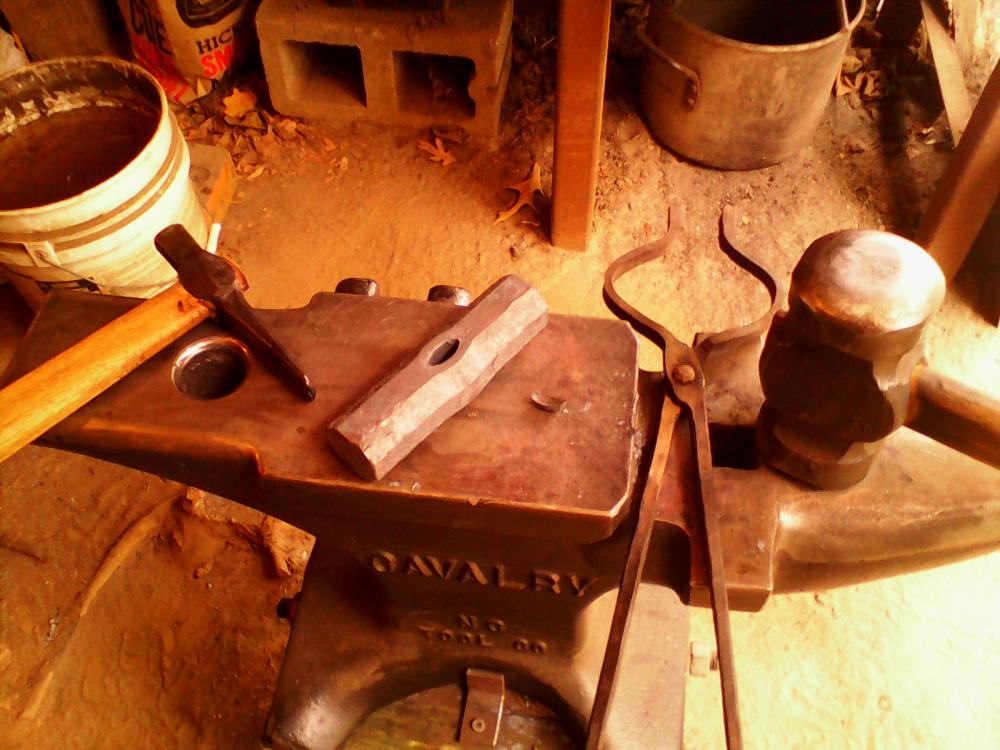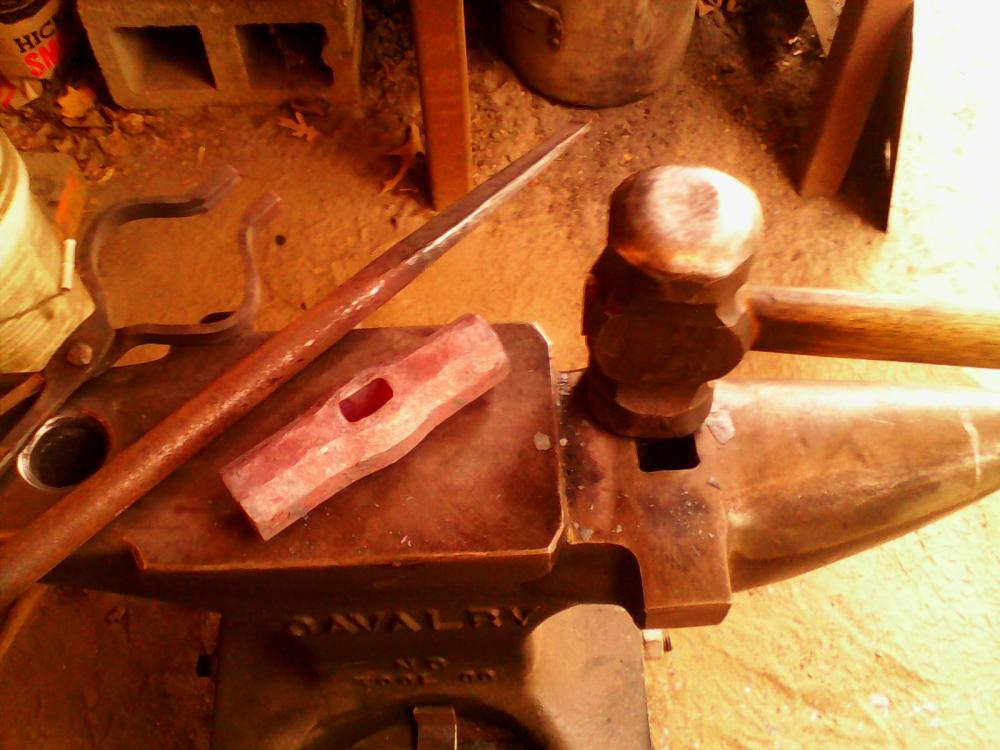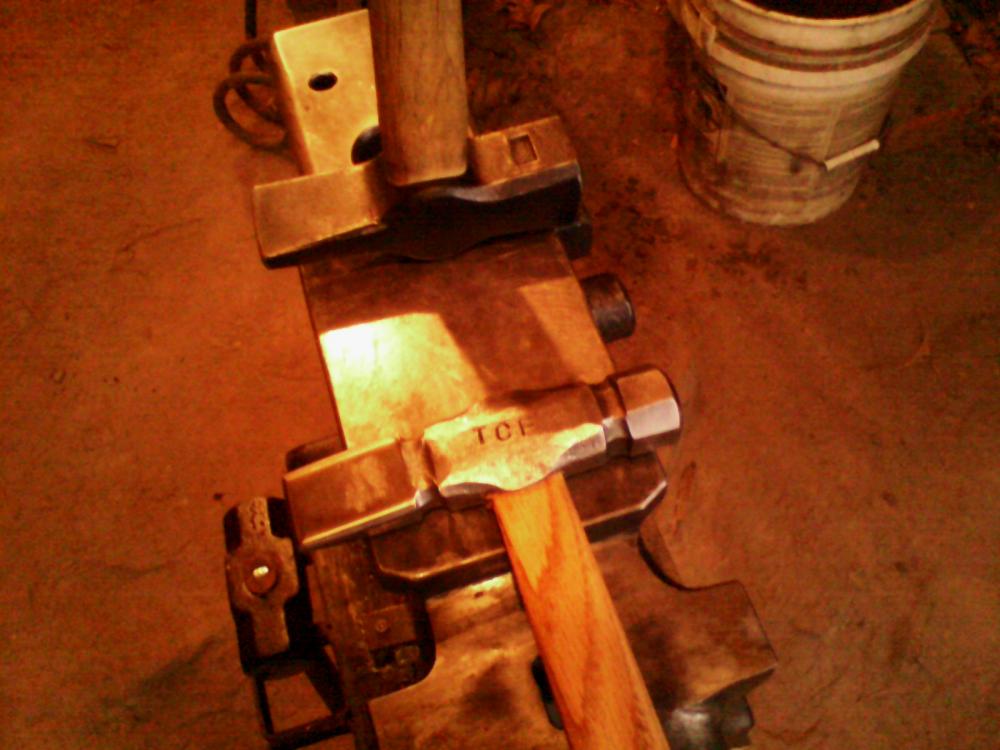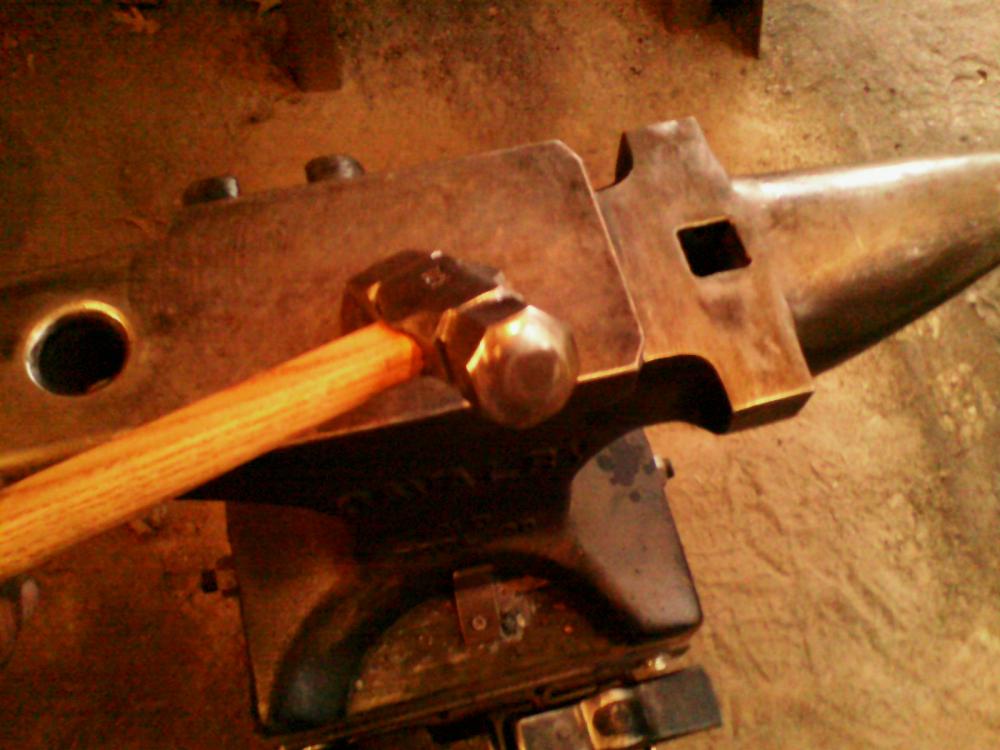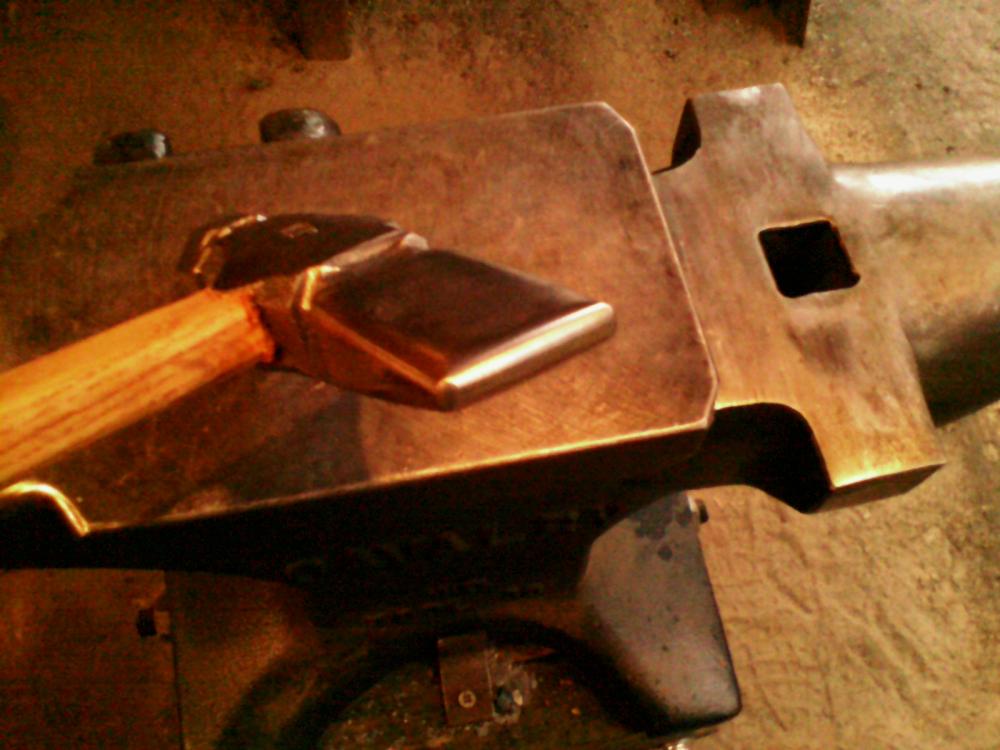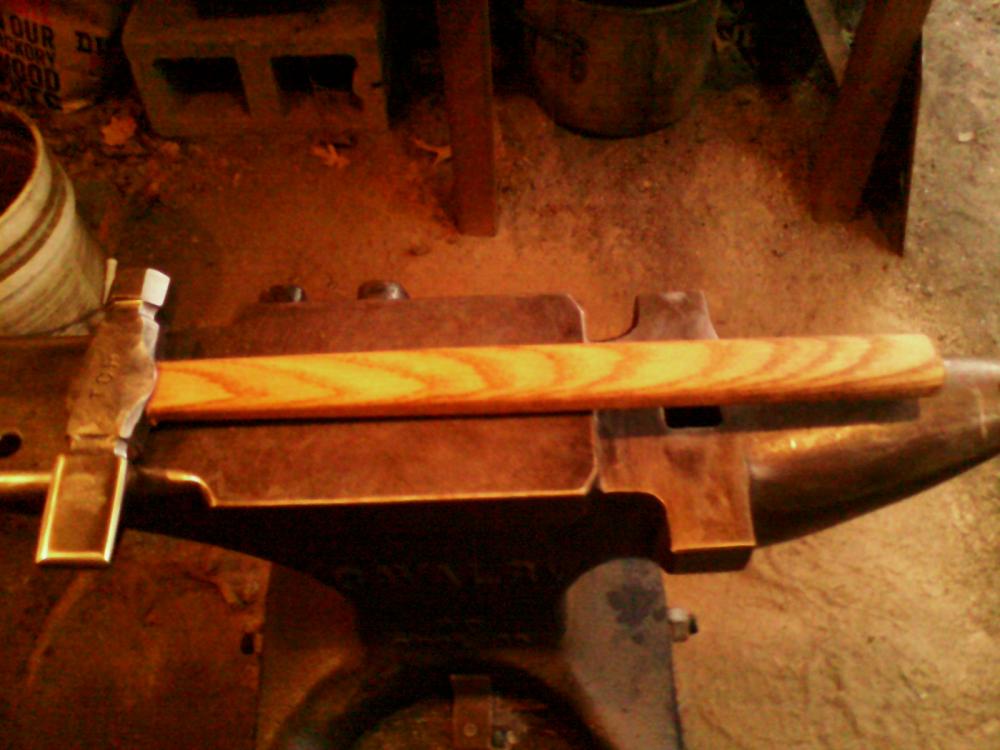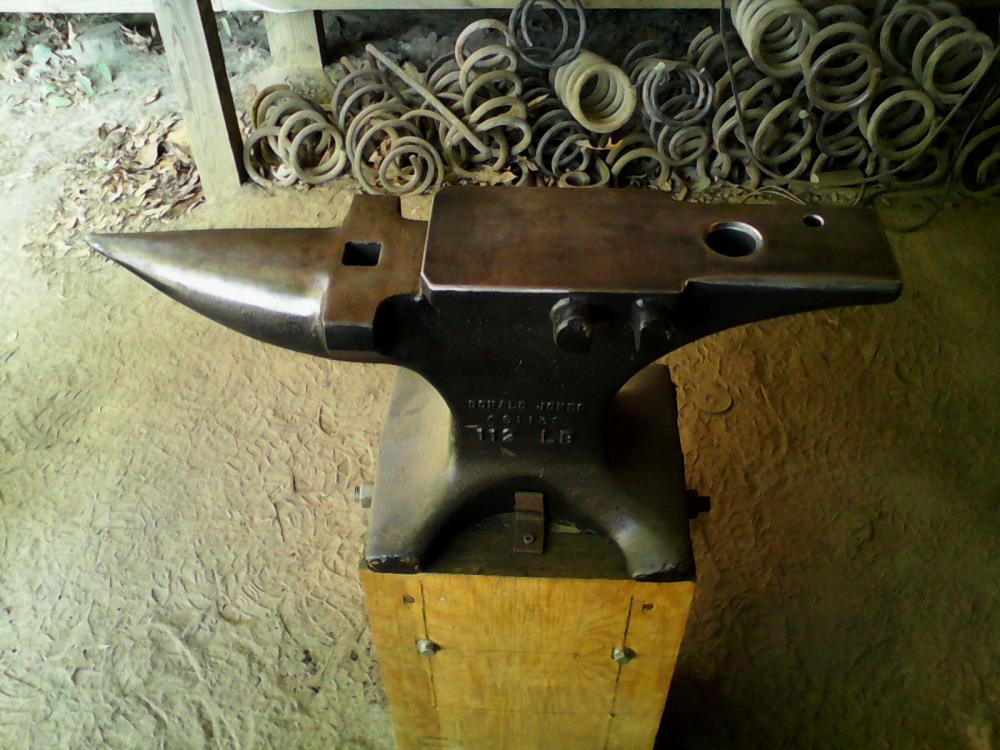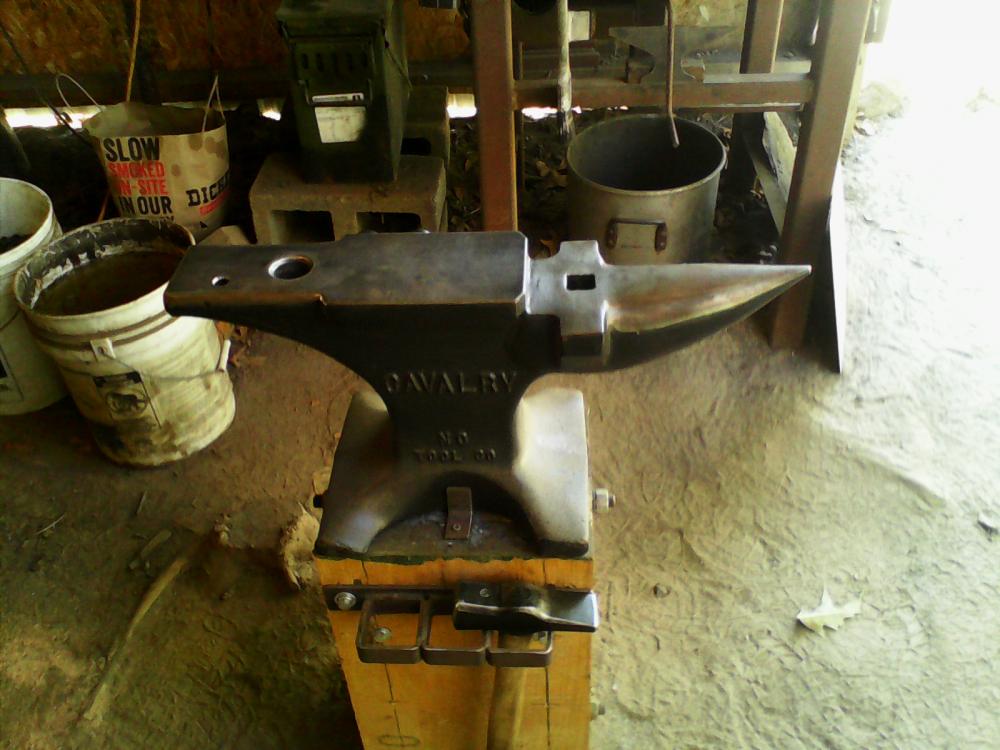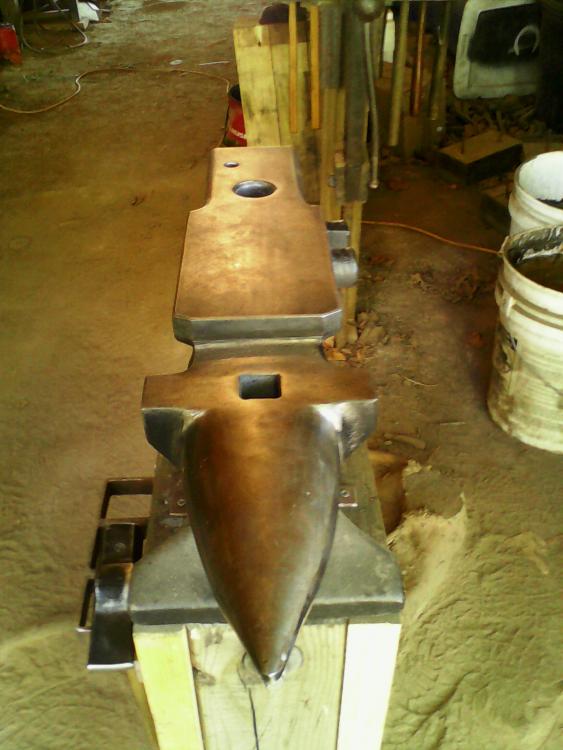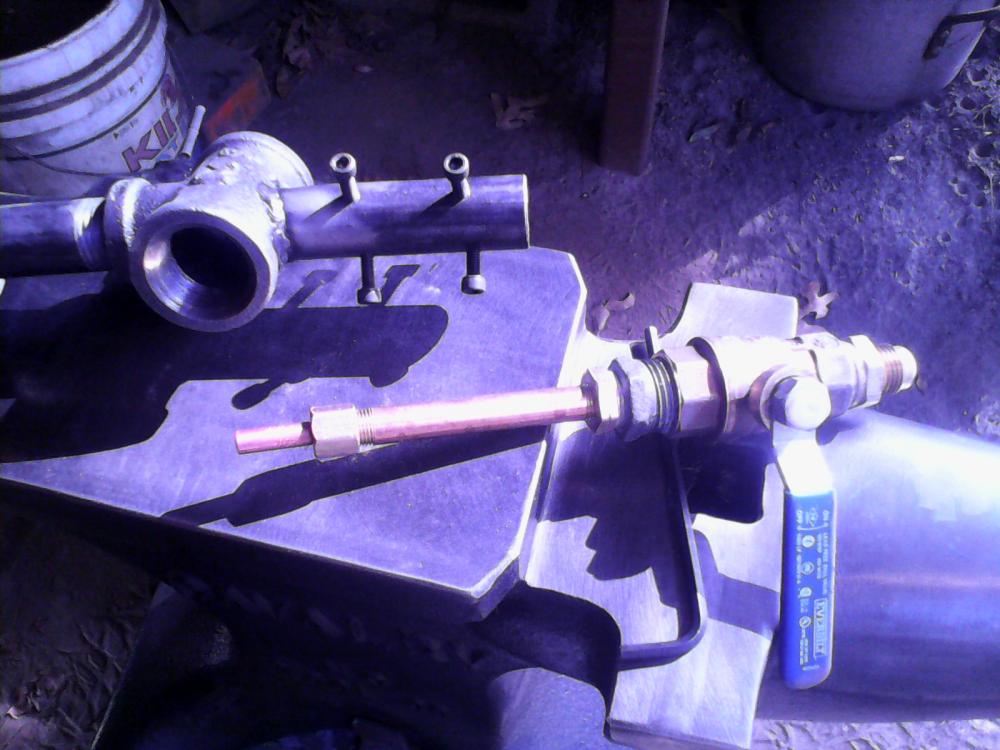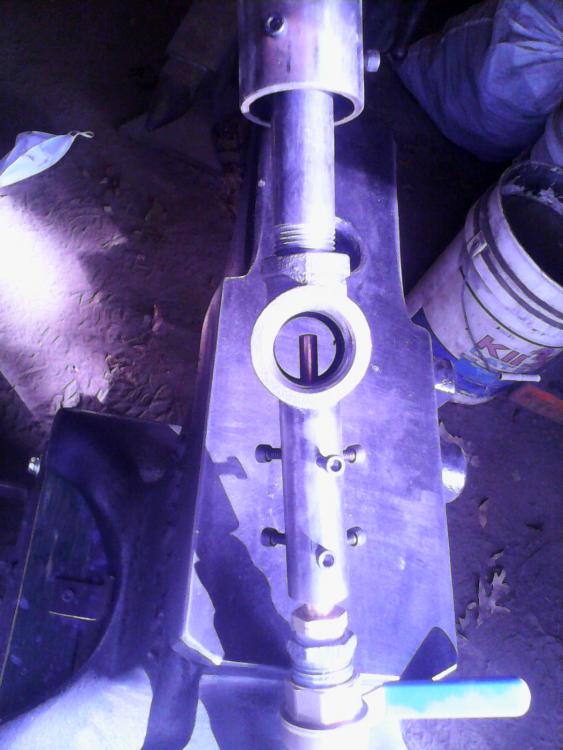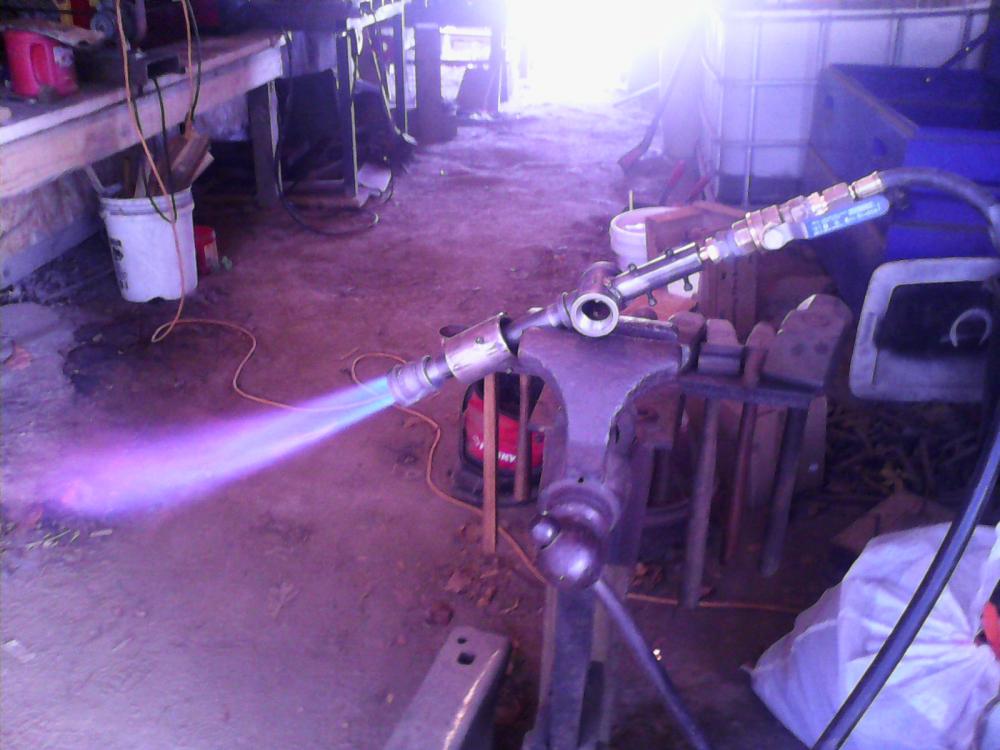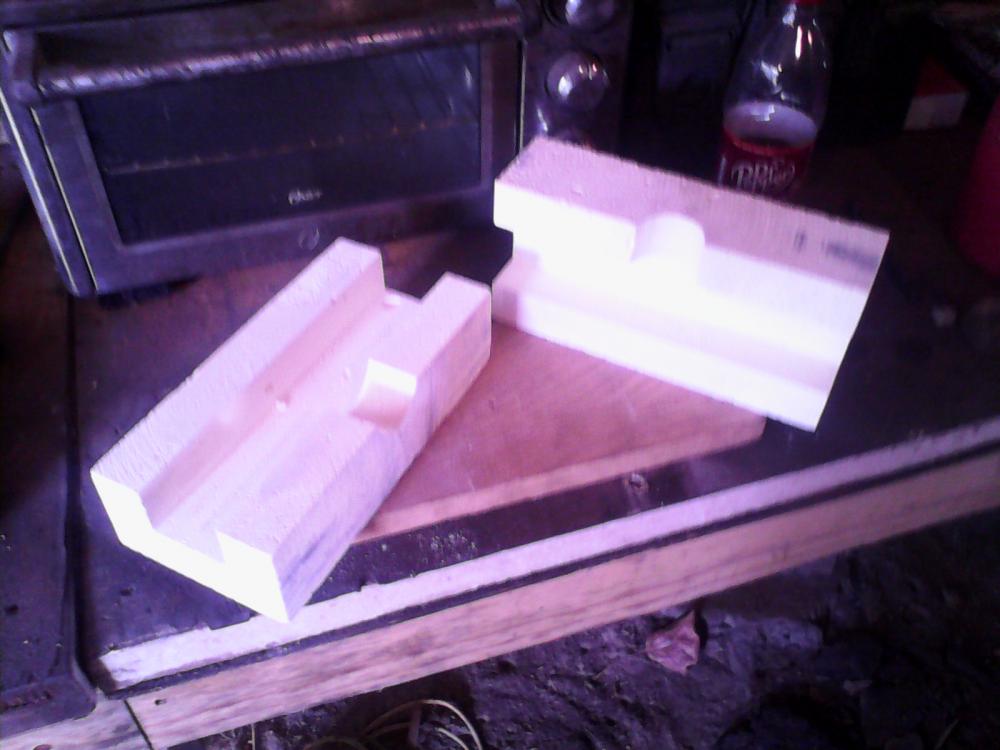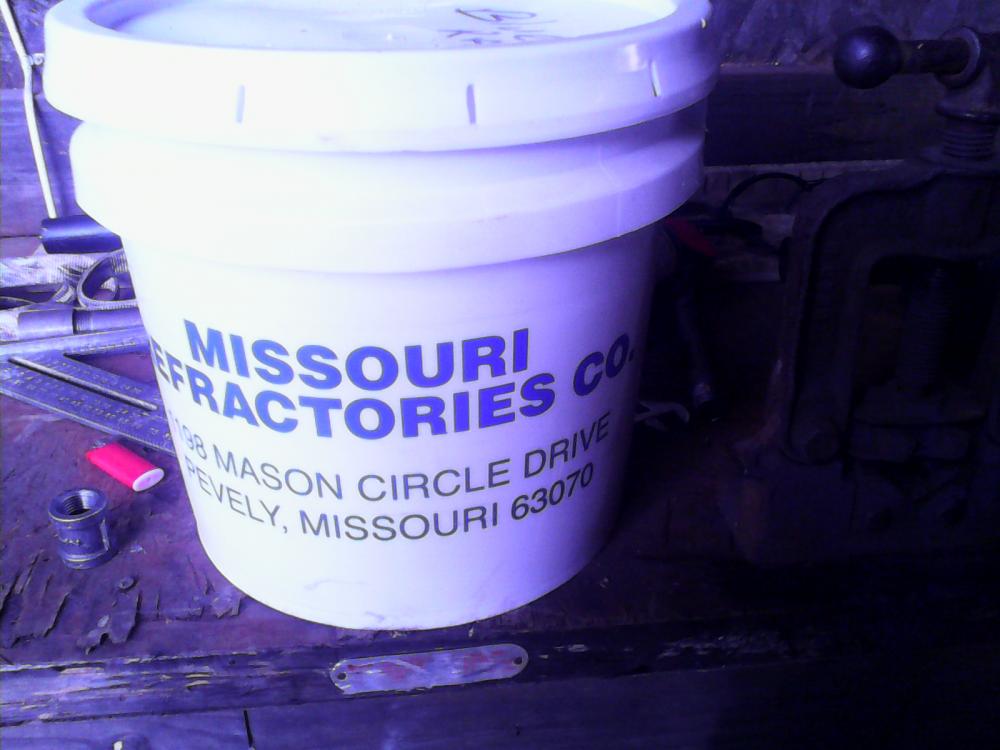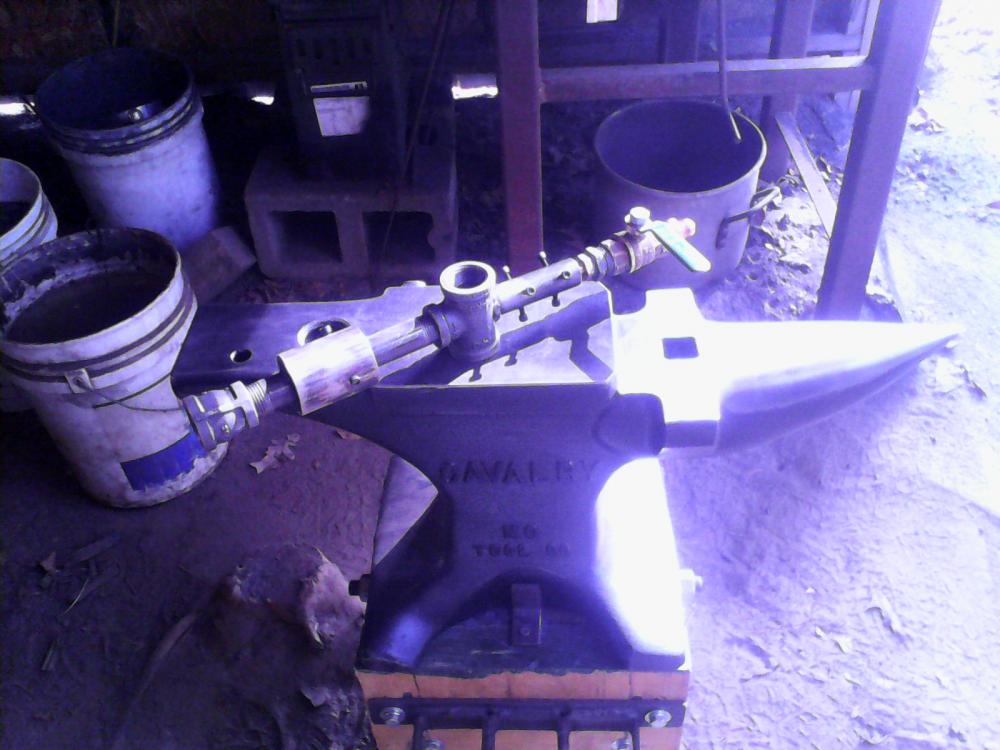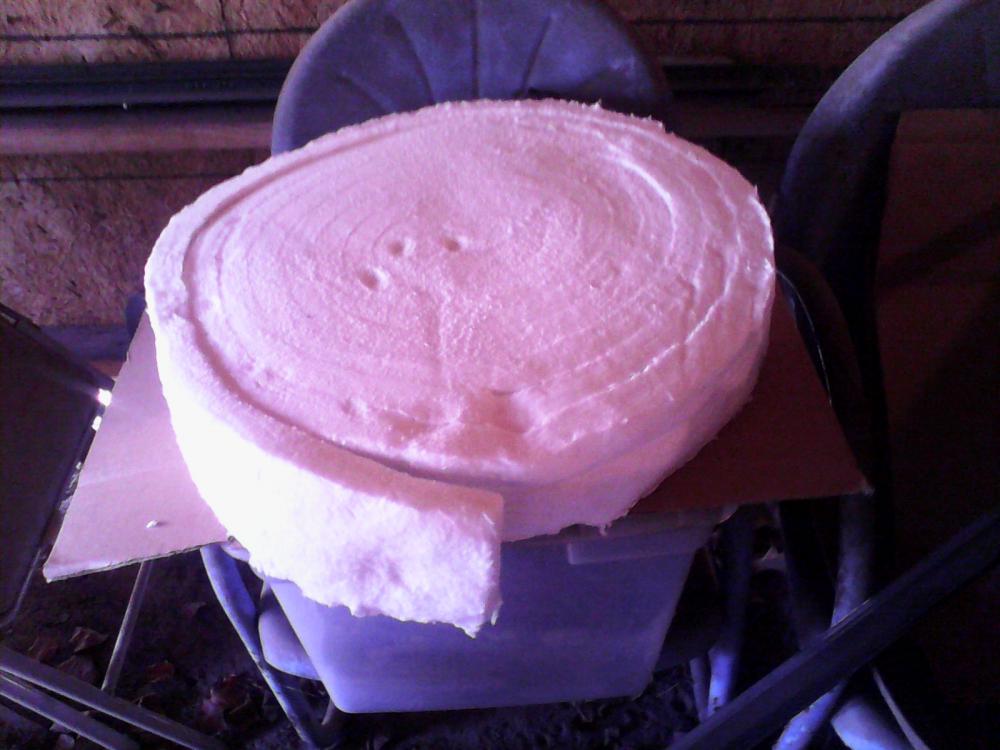-
Posts
450 -
Joined
-
Last visited
Content Type
Profiles
Forums
Articles
Gallery
Downloads
Events
Everything posted by TwistedCustoms
-
Hey Jonnyreb338, I'm up north near Carthage but there are plenty of folks near you. It may be hard to get anyone's attention till after the holidays are over but they are out there. Check out the Gulf Coast Blacksmiths Association online. The Ms Forge council meets at the Ms Ag and Forestry Museum in Jackson every third Sat at 9am. Check the website for schedule changes around holidays before you drive up! We do meet every month but the date gets moved for holidays. Also the spring 2017 gun and knife shows in Laurel and Hattiesburg will have several makers from down south selling their wares. Search online for Fire in the Swamp, they have a FB page but I can't link to on this site. Fire in the Swamp is an annual hammer in around Picayune. Nice work and I look forward to seeing more photos!
-
No lube punching hammers, just bees wax to cool the punch. Drifts arent hardened so no worries with them.
- 4 replies
-
- punch drift
- lube
-
(and 3 more)
Tagged with:
-
Is number three an Izula? I like number five. Bird and trout knives are a handy size. I like number two but I'm wondering how the Nova is tracking with that missing spring ;-) What are the coatings on #2 and #3?
-
What do you do when.....
TwistedCustoms replied to SkoobyNewb's topic in Blacksmithing, General Discussion
The same! -
Size material for an axe
TwistedCustoms replied to fishfinder401's topic in Axes, Hatchets, Hawks, Choppers, etc
Are you piercing and drifting the eye? If so I would use the 2" 4140 but I would trim the starting weight down to around 1.75 lbs for the style in the photo. If its a one time deal hammering it out from say 2"d x 3"lg won't hurt you but if it's going to be an everyday thing I would be looking for 3/4-1" x 2" to save a lot of hammering. The style axe in the photo should be fast in the hand. It will feel a lot better at a finish end weight of 1.5lbs or less. -
What do you do when.....
TwistedCustoms replied to SkoobyNewb's topic in Blacksmithing, General Discussion
If I had that much time on my hands picking up a heat I would spend it all designing a hotter forge ;-) 2-1/2" round takes three to five minutes on the first heat and I spend that time turning the stock often. Smaller stuff is a snap. Shop music is as varied as the things that come off the anvil ranging from Wagner to Bluegrass to Metallica. Today it was Bing Crosby, Perry Como and Sinatra. -
That spider is Awesome! If you don't mind me being a copy-cat I would love to make one of those to sit on my forge hearth. Very cool use of materials.
-
The grate looks a little light. It may hold up for a while but I agree with Daswulf about looking for an alternate. If you have a welder You can lay 1/2" round side by side and spaced 3/8" apart and weld up a sturdier grate. You can also get a cast ductile tuyere cover from a blacksmith supply for around $20.00. I would definitely flare those legs out to get a sturdier base. Looks a little prone to tipping over as is. Other than that it looks good. I forged with a break drum for three years until I upgraded. Forging in that set up for a while will let you know exactly what you want when you build another one! Now build a fire and show us some more pics! Happy Forging....-M-
-
800g Straight Peen from a Jackhammer Bit
TwistedCustoms replied to TwistedCustoms's topic in Hand Hammers
Thank You Vaughn T. Its always trial and error with reclaimed steel. I water quenched the mushroomed cut off end before I started forging and no "ping" in the bucket. The test piece hardened without fracturing. Still when it came to quenching the hammer I suited up, gloves, apron, face shield. I've had small bits of mystery steel shoot out of the tub when water quenching but no worries this time. -
800g Straight Peen from a Jackhammer Bit
TwistedCustoms replied to TwistedCustoms's topic in Hand Hammers
Thank You Fiveohmike. Mystery steels scores again! Drawing it to straw left it quite hard. Free fall from 6" gets nine bounces on the anvil it was made on. I'm sure it ended up a little harder than my anvil but that's OK, I don't miss...much. -
viking axe class
TwistedCustoms replied to teenylittlemetalguy's topic in Axes, Hatchets, Hawks, Choppers, etc
Very nice work! You should be proud of that one!- 33 replies
-
- broad axe
- viking axe
-
(and 1 more)
Tagged with:
-
Smallish (800g) straight peen. This was a jackhammer bit that's been in the scrap drum for a couple of years. Water hardened and tempered to straw. Handle is red oak wedged and cross wedged. I got tired of stopping to take photos early on. I used a guillotine fuller and two lb and four lb rounding hammers. One photo shows the straight peen with a 1500g Swedish pattern for scale. Not the prettiest hammer I've made but it was a fun afternoon of doing something different!
-
Tomahawk Design and Materials
TwistedCustoms replied to AKHunter's topic in Axes, Hatchets, Hawks, Choppers, etc
The 4140 won't hold an edge as well as 1084 assuming good heat treat on each but the 4140 is easily obtainable in dimensions suitable for piercing/drifting the eye. A small forging in the 1-2 lb range can be water hardened and tempered using hot drifts inserted in the eye till the color runs out to the cutting edge. Easy as pie. If edge retention is the number one factor you could weld in a 1084 bit and do the heat treat for the 1084. I haven't oil hardened 4140 but if the 1084 hardens the 4140 should be tough enough for the body/spike even if it doesn't harden. A little reading will show if the two are compatible for the same range of heat treat. I use 4140 for hammers, hot cuts and hatchets. On hammers and hatchets I like r52-54. Edges hold up well splitting wood and can be dressed with a small file but may not be hard enough for what you want. Good luck and please share some photos when you get under way. As we say in Ole Miss, "keep your powder dry and happy hunting!" -
Tomahawk Design and Materials
TwistedCustoms replied to AKHunter's topic in Axes, Hatchets, Hawks, Choppers, etc
Look at the Gransfors Bruks flay poll hunters axe for design ideas/inspiration. As for heat treat you would be much better off scrounging a two lb section of water hardening medium c steel like 4140. Old truck axles and rams from hydrolic cylinders are inexpensive sources and are easy to heat treat without specialized equipment. Just my opinion based on the info you provided.... The flay poll is not compatable with the spike design aspect but I think it would be a more useful feature for big game than the spike. The flay poll is great for caping and gives the option of using a mallet or heavy branch for powering the cutting edge through bone and connective tissue. -
I don't know how practical forging the slot would be but it could be done by slitting the end of the branch/stock into two tabs or fingers. Space the two fingers to fit snug on the shaft of the anchor screw and then heat and fold them back over the base of the branch to sandwich the head of the screw.
-
Do you wear rings while blacksmithing?
TwistedCustoms replied to Glenn's topic in Safety discussions
Twenty years servicing high voltage equipment = no rings or wrist watches and I still have all my digits ;-) -
I read a post on IFI that described this anvil as a "Swiss Army Knife" of the anvil world. It has all sorts of features not normally associated with a Blacksmiths anvil. Turning lugs, square clip horn, the large turning hole in the heel. For reasons I can't fully explain I have always been drawn to this little anvil. I have several English anvils, Mouse Hole and Wilkinson, and a couple of post anvils made of 4140. But I still wanted to give the Cavalry model a try. The Cavalry, like most of the modern farrier anvils I've looked at it is made of cast, ductile iron. It is not the soft cast iron the import ASOs are made of. My first impressions were good but I admit to being biased in that I really like the look of this anvil. I had no expectations about performance having never forged on ductile iron but I was happy to find the Cavalry is a lively little soldier. It does not rebound as much as my mouse hole and doesn't come close to the rebound of a forged steel anvil but pound for pound its about one fifth the price. Size is ample for my needs. One of my Mouse Holes is 130lbs and at 112lbs the face of the Cavalry is larger. That's just a difference in configuration. For my use, 112lbs is plenty big for a shop anvil. I seldom forge anything over 3/4" square with a hand hammer. I have a striking anvil for heavy hitting with the sledge. I had to radius the shoulders but I left the square shoulders on the clip horn till I can think of a use for them. The anvil has a 1" hardy in the horn. I will be forging 1" shank tools but sleeves could be used to reduce the 1" hole to accept 3/4" shank tooling. The heel is quite thin, too thin for heavy forging but as stated above the sweet spot of the face is plenty big. The hole in the heel is interesting though. I plan to use it for drifting with drifts too large to drift into the hardy. I've been forging on the anvil daily for two weeks and I'm very happy with the investment. In my case this anvil is an addition to my tool set. Its not my only anvil and it won't be my last. The reason I wanted to write a review is the flood of calls I've been getting from folks wanting to get started who are shopping for an anvil. There are still plenty of gems out there hiding in barns and weeds but for a beginner with little to no knowledge about how to tell a delaminated face plate from a forged steel Sweed from a cast iron ASO from a fire damaged, poorly welded.....it can be a crap shoot. And the prices are getting to be a bit out of hand on some real duds in my area. So, in my opinion, the NC Cavalry is a safe bet for someone on a budget who may be wanting to test the waters without taking out a second mortgage. In the continental US the Cavalry is less than $450.00 dollars delivered. I won't say by who, I'm not advertising or advocating for anyone but a quick online search will reveal who offers free shipping on this anvil in the US. Lots of dealers sell NC anvils so there is wiggle room on price but it was under $450.00 everywhere I looked. I'm happy with the Cavalry and will continue to forge on it for the next year. I will update this post if I encounter any quality/condition issues. I hope this helps someone who may be about to spend way too much money on something missing two thirds of a face plate. It is quite possible that one third of a face plate could have marginally better rebound than the Cavalry but in my opinion the Cavalry is more bang for your buck. Happy Hunting...-M-
-
I was just browsing through another forum, a prepped site, and ran across this. Being ex military, (US Army) I love a good acronym. Someone posted this...Beware the IDIOT (incredibly dangerous internet of things). I found it about ten minutes ago but it took me that long to stop laughing.
-
Happy Halloween, blacksmithing related ghost stories.
TwistedCustoms replied to Daswulf's topic in Everything Else
I too get that sneaking feeling that Spirits are invading my body from time to time. The twenty year old single malt variety are particularly intent on finding a way to show their presence around 5pm on a cool Autumn evening. ;-) -
Thank goodness for solid fuel. I hedged my bets by securing a thousand pounds of coke today. I had orders that had to go out so I didn't get to work on gas forges today. Turns out getting a burner to stay lit is just the beginning. So far I have spent double the cost of a whisper baby and have managed to bring one piece of 3/8" square mild up to forge temp after several minutes in the two brick. On the plus side I have enough materials to build several 350 cubic inch forges but I have a lot more reading to do. The Blue Ram refractory is not castable, it is in fact a ram type refractory. It's right there in the name, I just didn't know that type existed when I bought it. The guy said it was rated for 3000f so I brought it home. I pounded out a small test piece on the face of a hard fire brick to dry overnight. The company confirmed what the salesman said about it curing through evaporation. Pound it out around the walls of the vessel and let it dry. I told them what I was trying to build and they said not to worry about the k-wool. Two inches of this stuff is supposed to keep the outer shell cool to the touch. We'll see. Thanks for the input Monkey Forge. I'm going to read through your post. I'm now planning to build a larger shop forge rather than build a smaller burner for the two brick. I am finding this whole side of forging fascinating and I like a challenge. You're right, the 1/2" is way overkill for the two brick. Rather than build smaller burners, which from what I gather may require a level of skill I don't yet posses, I'm going to build a bigger forge. Thanks for the the tip about galvi. I did use a galvi bell for the air intake on frankenburner but no galvi on the hot end. Everything I've picked up since then is either black pipe or brass. Is there any reason other than cost not to make a burner from all lead free brass. Just curious about that one.
-
Lattacino, no one builds with black pipe or copper in the South. It's mostly pex tubing for water and very few gas appliances because of the mild winters. Everyone I know has electric heat. As a result you're lucky to find 1/2" and 3/4" pipe fittings of any variety at the building companies. I did look for a cross fitting but no luck, hence the welded pipe and forrest of cap head screws. The refractory is on hold for now. I will get the MSDS before I pop the top on it. I've been playing with the two brick all morning. It heats up near the entrance ports but won't put any color in mild steel under the burner. Is this cold spot because of the air being drawn in(too much air not enough gas?) I'll keep tinkering and post photos tonight.
-
Update... I brought home a bag of plumbing parts to put together a few T-burners, a 4'x8' sheet of 14 gauge plate, a case of soft fire brick, a 4"x25' roll of k-wool and a 55lb bucket of something called "blue ram". The blue ram is a cast able refractory rated for 3000f. The guy at the sales office told me it dries through evaporation, no need to fire it after it sets. I'm hoping someone here has used it and can give me some pointers. It contains crystalline silica and acidic phosphate. The T-burner....I wanted to be able to move the gas jet in and out without having to take anything apart so I welded a sleeve onto the back of the T and I can move the gas assembly by loosening a couple of cap head screws. I carved out two of the brick for the small forge and started the fab work on the housing but ran out of daylight. Next update tomorrow.
-
Farrier tools Hand forged, not factory.
TwistedCustoms replied to jlpservicesinc's topic in Tools, general discussion
Your driving hammers make me smile. As a Farrier who uses these tools for their intended purpose, is it upsetting to know that I use an old Diamond brand clinch cutter as a hot cut for small stock? I also have an old pair of clinchers I straightened the curved jaw on to hold 1/4" stock. They are very "toothy" tongs but they do grip! -
To all those smiths who told me railroad spikes were useless
TwistedCustoms replied to Forging Carver's topic in Knife Making
Buzz kill, Thanks for the response, I'm trying to download an app so I can watch the video on my tablet. After reading through this thread and not seeing any mention of the shaving I admit I'm surprised to hear that it did. -
To all those smiths who told me railroad spikes were useless
TwistedCustoms replied to Forging Carver's topic in Knife Making
The ABS journeyman test requires the knife to still shave hair after chopping through the 2x4 twice. I'm off to search for the video but after reading through the posts I never saw any mention of the shaving requirement. If the blade won't shave after the chopping portion of the test the Mastersmith won't even continue. I'm not knocking spike knives, I make them, even like them. They have personality. But because I have made more than a few of them I find it hard to believe that one of them passed All the requirements of the ABS journeyman test, I mean it is a pass or fail test. Three out of four isn't a pass.

